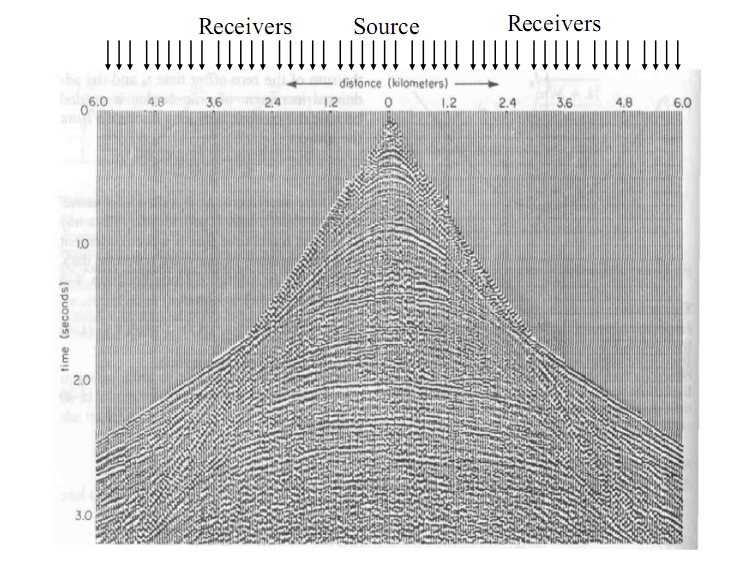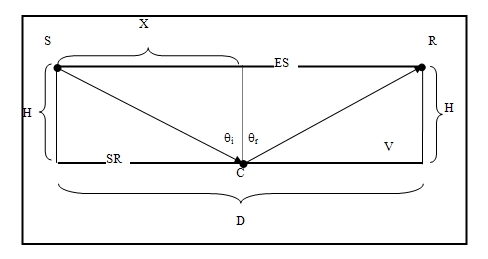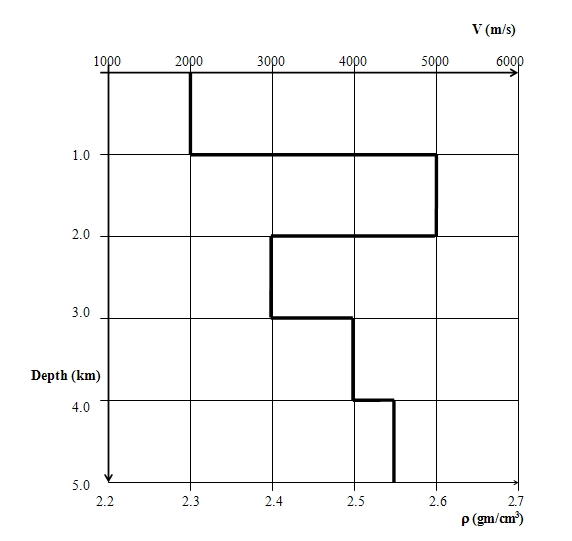博文
毛宁波2011年《地震勘探原理》新课件(第3讲)
|||
2、地震勘探野外工作中为什么不采用自激自收的观测方式?
3、什么叫地震的纵测线和非纵测线?
4、纵测线,一个水平分界面,均匀介质情况下共炮点的直达波时距曲线有何特点?
5、直达波的时距曲线一定是直线吗?
6、纵测线,一个水平分界面,均匀介质情况下共炮点的反射波时距曲线有何特点?
7、纵测线,一个水平分界面,均匀介质情况下共炮点的反射波时距曲线和直达波时距曲线之间有怎样的关系?
8、学会从地震野外记录中识别直达波和反射波.
9、纵测线,一个倾斜分界面,均匀介质情况下共炮点的反射波时距曲线有何特点?和水平界面条件下有和异同?
10、浅层的反射波时距曲线和深层的反射波时距曲线弯曲程度有差异,为什么?

To understand the importance of Fermat’s principle in deriving Snell’s law in the reflection and refraction cases.
Introduction(介绍)
Fermat’s principle states that a wave will take that path which will make the traveltime stationary (i. e., maximum or minimum). Mathematically:
dT / dX = 0,
where T is the total traveltime along the wave path and X is the distance from the source to the point where the wave changes its direction (e.g., point of reflection or refraction). In most situations in the earth, the stationary path is the minimum-time path.

R: Receiver 接收点
C: Reflection point 反射点
ES: Earth’s surface 地表面
SR: Subsurface reflector 地下反射界面
H: Layer thickness 地层厚度
V: Layer velocity 地震波速度
D: Source-receiver offset 炮检距
X: Distance to reflection point 激发点到反射点距离
Qi: Incidence angle 入射角
Qr: Reflection angle 反射角
大家也可以思考一下如何证明透射定律。
Objective
To calculate the reflection coefficients(反射系数) between different lithologies and determine the effect of ignoring the density in calculating the reflection coefficient.
Introduction
The reflection and transmission coefficients (R, T) are defined as:
R = (Z2 – Z1) / (Z2 + Z1)
T = 1 – |R| = 2Z1 / (Z2 + Z1);
where Z = D V is the acoustic impedance, D and V are the density and velocity, respectively.
Exercises
Given the attached velocity-density model(如图2):
1. Calculate R = R(V,D) at each interface(界面).
2. Calculate T = T(V,d) at each interface.
3. Calculate R = R(V) at each interface using only velocities (i.e., drop r from the formula).
4. Calculate the absolute error between R found in steps 1 & 3. The absolute error is defined as:

5. Plot E(%) versus:
a. |R|
b. V2/V1
c. D2/D1
6. How does E(%) changes with:
a. |R|
b. V2/V1
c. D2/D1
7. What would you do if you were given only V and have been asked to calculate R?

图2 某口井速度和密度随深度的变化关系
 代表密度的意思()里面是单位----与作业里面的D意思相同-----
代表密度的意思()里面是单位----与作业里面的D意思相同-----
https://blog.sciencenet.cn/blog-339326-416961.html
上一篇:毛宁波2011年《地震勘探原理》新课件(第2讲)
下一篇:毛宁波2011年《地震勘探原理》新课件(第4讲)